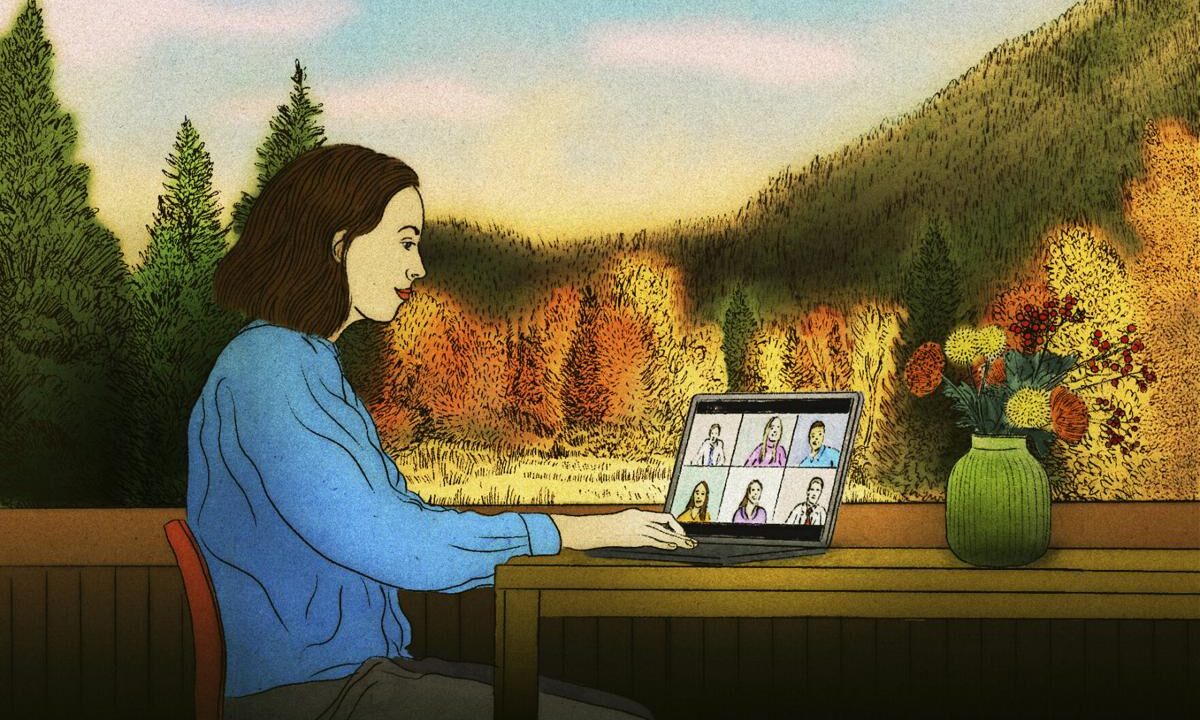
When Kate Smith worked a 9-to-5 office job, she was burned-out, suffering from daily migraines and thinking, “I can’t do this for the rest of my life.”
She didn’t have to. For her next role, Smith landed a remote, full-time marketing job that enabled her to travel the world.
Her laptop lifestyle took her to Bali, where she lived and worked for a year-and-a-half. “Every day, I was riding my scooter through the rice fields and thinking, ‘I love my life, this is amazing,’” she said. “And that feeling never fades. … I feel so grateful for the freedom and flexibility.”
While Smith, 36, has worked remotely for more than a decade, the trend of ditching traditional office spaces to work from living rooms or beachfront shacks accelerated in 2020, when the coronavirus hit and workers who could began performing their jobs from home.
Many people grew accustomed to the lifestyle change once they tasted the freedom and flexibility a home office afforded. Working parents enjoyed meeting children at the school bus. Others found more time for exercise, socializing and basking in nature once their jobs did not include long commutes.
But after the pandemic subsided, many large companies began calling employees back into the office, creating fierce competition for jobs that could be done from anywhere. Many positions advertised as remote attract hundreds, if not more than a thousand, of applications, experts said.
“Fully remote is very rare now in the U.S.,” said Mark Ma, associate professor of business administration at the University of Pittsburgh. “It is getting much more difficult and you need to look for the smaller firms or medium-sized firms … and those firms do not provide as competitive financial packages as the big firms, but they try to attract talent by providing more flexibility.”
